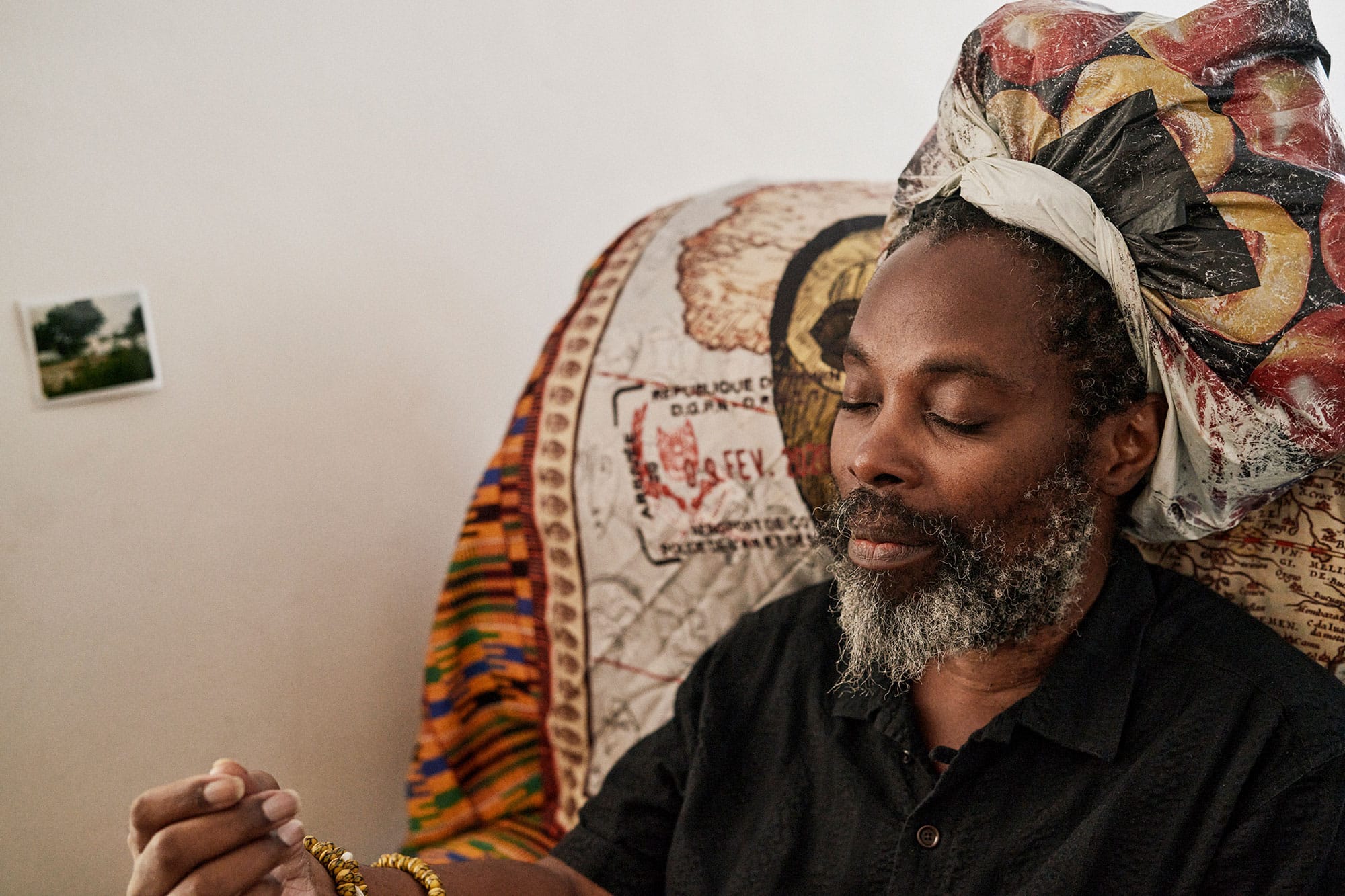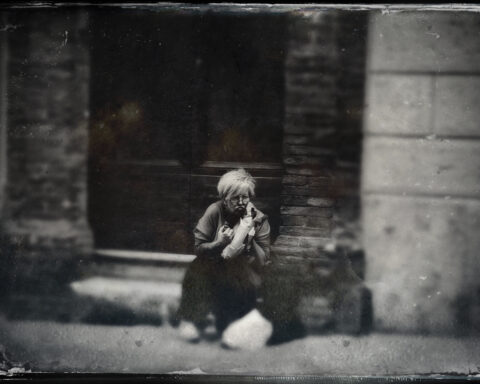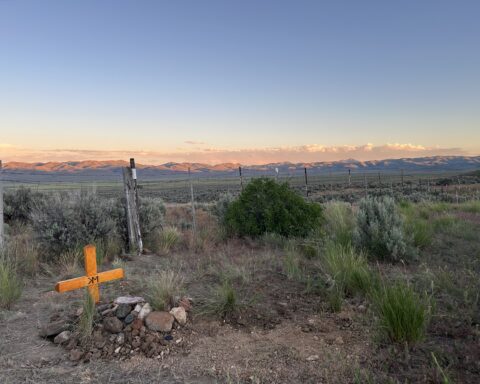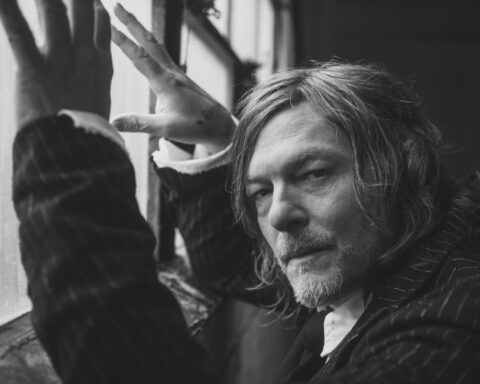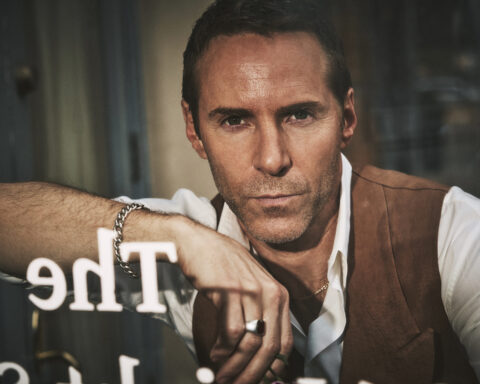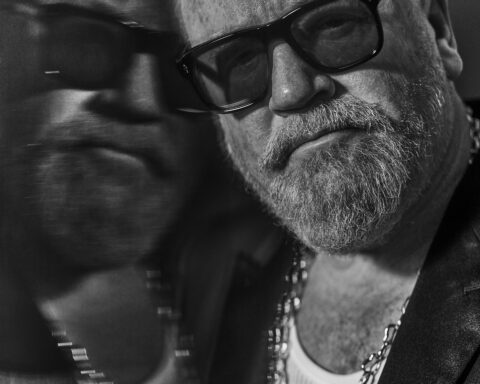Male leaders in multiple fields of industry are amplifying the necessity for mentors, for setting good examples, and for father figures. Indeed, whilst staying with my favorite 13-year-old twins, Sid and Walt, this week in London, when the subject of rules came up, Walt was quick to respond, “We need guidance not rules.” This wasn’t flippant nor disrespectful, it was proof that this was a subject thankfully discussed in their new school.
As many of you are aware, I grew up without such. My father passed aged 45 when I was 11 years old. I wasn’t blessed with guidance and broke most of the rules my lovely mum attempted to implement. Thus, the relationship of father and son, teacher and student, mentor and apprentice has been a consistent theme of searching in my life. Professor Scott Galloway, the business podcasting star, has shone his cerebral celebrity light on the subject on numerous occasions, having been raised predominantly by his mum. I know of many very successful men who have experienced a very similar trajectory.
So it’s a genuine pleasure to bring to your attention the story of this week’s cover star, Johnnie Sapong — hairdresser to film stars, catwalk models, music legends, and more. Father, friend, husband, all around amazing human. Johnnie is also a man born into a very traditional Ghanaian family, who not only benefited from having a wonderful, committed father but, due to a dire recent medical emergency when he was diagnosed with a brain tumor, saw the eldest of his four sons step up and into the shoes of responsibility — an act that in part helped to save his father’s life. We discuss how this moment highlighted the parallels crossing the generational relationship of a father and son.
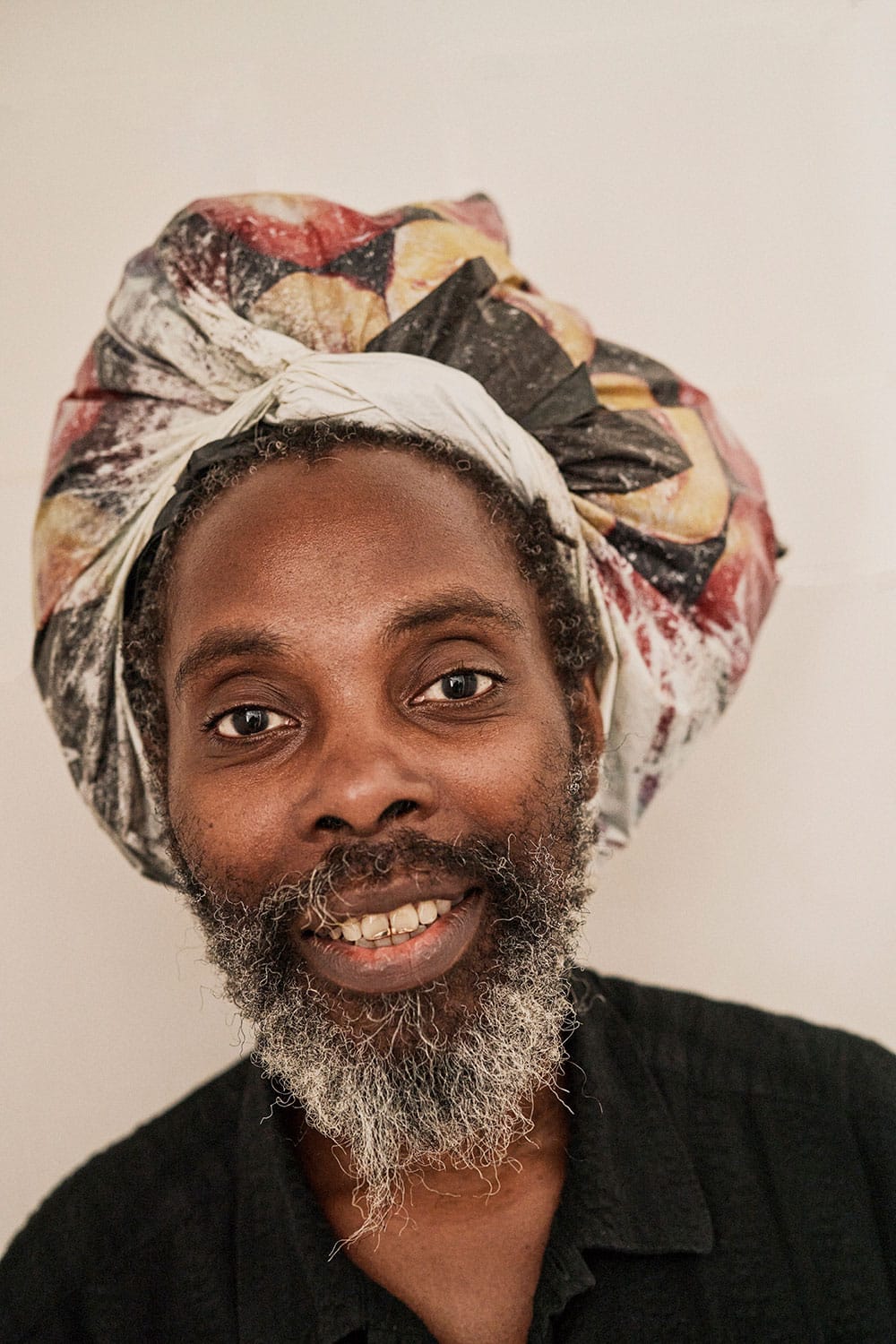
Full disclosure, Johnnie is a friend of 30-plus years, who has earned his stripes working for all the greatest brands and top-tier magazines, grooming a vast number of A-listers over the years. Johnnie is a man of immense joy, light, talent, warmth, and humor. For a creative endeavor to really fly, it’s all about the atmosphere, the vibe of the team. It’s not only about being a skilled tradesman — perhaps that’s 50% — what’s truly vital is the energy and quality of the communal collaboration. I have been on set with Johnnie many times and when he is booked on a job, his character and vibe immediately elevates the day, thus meshing the various players and harmonizing the collective goal. Johnnie is a rare bird, a beautiful and grateful soul. Everyone loves Johnnie.
When Johnnie experienced his sudden near-death occurrence in June, his eldest son Zion, Karen, his wife and partner of 40 years, and Nora, a trusted and devoted assistant, took to social media to call on friends and community to donate to a GoFundMe campaign to help with medical costs and support the family of six whilst Johnnie, the family’s primary breadwinner, took the necessary time to rest, recuperate, and heal. Word got out and flew around the globe and within days the love, affection, and genuine admiration Johnnie’s crew felt for him was crystal clear. Actor Daniel Craig, singer Joe Jonas and many others — famous and not — were swift to contribute. Life just wouldn’t be good if Johnnie Sapong wasn’t around. I’ve been privy to many such social media campaigns, but none struck home so pertinently. Johnnie is much-loved for good reason.
So here’s a conversation I had with Johnnie around three months into his convalescence, on his long road to recovery. The example, values and sense of service that the late John Asante Sapong Snr instilled in his son, ‘our’ Johnnie, has clearly now been further passed onto his grandsons, proving why mentors, love, and guidance matter.
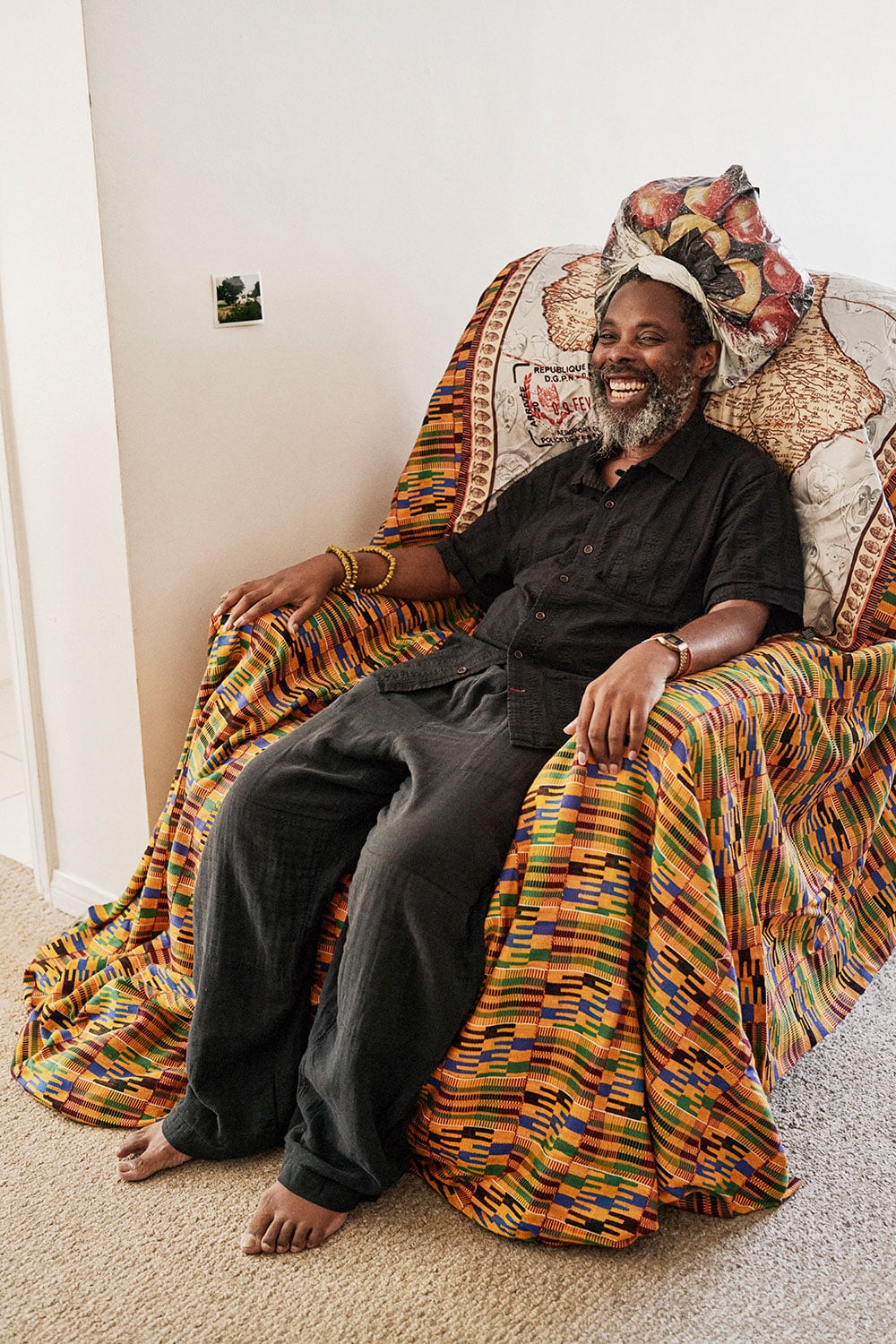
John Pearson:
You were on a magazine shoot recently with Alison [Edmond, Mr Feelgood Head of Creative] and Beau [Grealy, photographer] in Los Angeles and you told me you’d had this shocking thing happen that morning. Somebody from your neighborhood who was working in the garden had fallen and died, passed away right there. And it came at a time when you’d recently lost your father. I remember speaking to you as we always do, and you were explaining this to me and talking about Mr Feelgood, saying we should talk about the subject of death because it was prevalent in your mind.
I had been thinking about this as well, how in the western world we never really have that conversation about death. We sort of run away from it, but it’s obviously a massive, important, integral part of being a human being. And it doesn’t have to be a morose, somber conversation, but perhaps a reminder to make us live more.
So, that was a great talk we had. And then literally a couple of months later, your community, your close friends, all of us got a call. A notification from Zion, your eldest son. You had been suffering with sudden terrible headaches and one of yours and [your wife] Karen’s four sons was having a graduation. But the headache was so intense that you couldn’t even go to your own son’s graduation.
This headache didn’t go away and eventually you were rushed to hospital and they found a tumor on your pituitary gland.
Johnnie Sapong:
Yeah, as you were saying, death and mortality is a huge part of everything that’s happened to me, personally. And when I look back, there were signals. My neurosurgeon and I had this whole conversation about things that are happening to your body. Sometimes it’s like a notification. We live in a society, in a world, that’s all about notifications now. You just said before we were about to start interviewing, “Turn the phone off. Touch this and check that.” And so I think that that’s what your body does in a strange kind of way.
My father got sick last year, and as a family we’d all flown back [to the UK]. It had been the first time that we’d really been together in the UK since the pandemic. The last three years or so have been quite difficult to spend time and to communicate with your loved ones, and the fact that my dad was dying was a hugely significant time of my life. Because this was the guy that basically had me, no matter what. The unconditional love that that man showed just from his eyes, his pride.
Not to digress, but for the true understanding of what then happened to me was all about, that’s where it all started. I started to think that my eyesight was going and maybe it was kind of in his honor, or to favor him in some kind of way. And then there’s the moment that you’re lying in a hospital bed, actually having the same sort of symbiotic feelings. Last summer, I spent the whole time in the hospital with my dad. He passed on August 16, 2022, at 91. And this summer it was sort of life imitating itself. A kind of repetition.
John Pearson:
So, that was obviously a massive part of your timeline. We saw each other and we discussed this, and then you had the chap who passed away in the garden in front of you, and you were shocked and were thinking about this.
And we haven’t expressed how close you were to death yourself. I mean, you were really borderline. We were all notified because you were very, very close. So, can you tell us more about what exactly happened?
Johnnie Sapong:
So, it started June 8. On June 9, it was going to be my youngest son Cainan’s graduation. I had gotten back from work that evening from Palm Springs, and normally I would get back and just wind down. Desensitize. I went to bed, but woke up in the middle of the night, probably about 2am, and I had this pulsating banging in my head, and it felt like I was being axed. It was literally like the cleaver was coming down in the center of my head. And so I, unusually, got out of the bed and came and hung out with my dog. He must have sensed something was off, because this is not usual for me. If I was going to come and hang out, I’d probably be watching TV or going in the garden and smoking a joint or whatever. But he was kind of looking at me so I thought to myself, “I’ll go and look in the medicine box and see whether or not I should take something. Maybe there’s some paracetamol in there or something.”
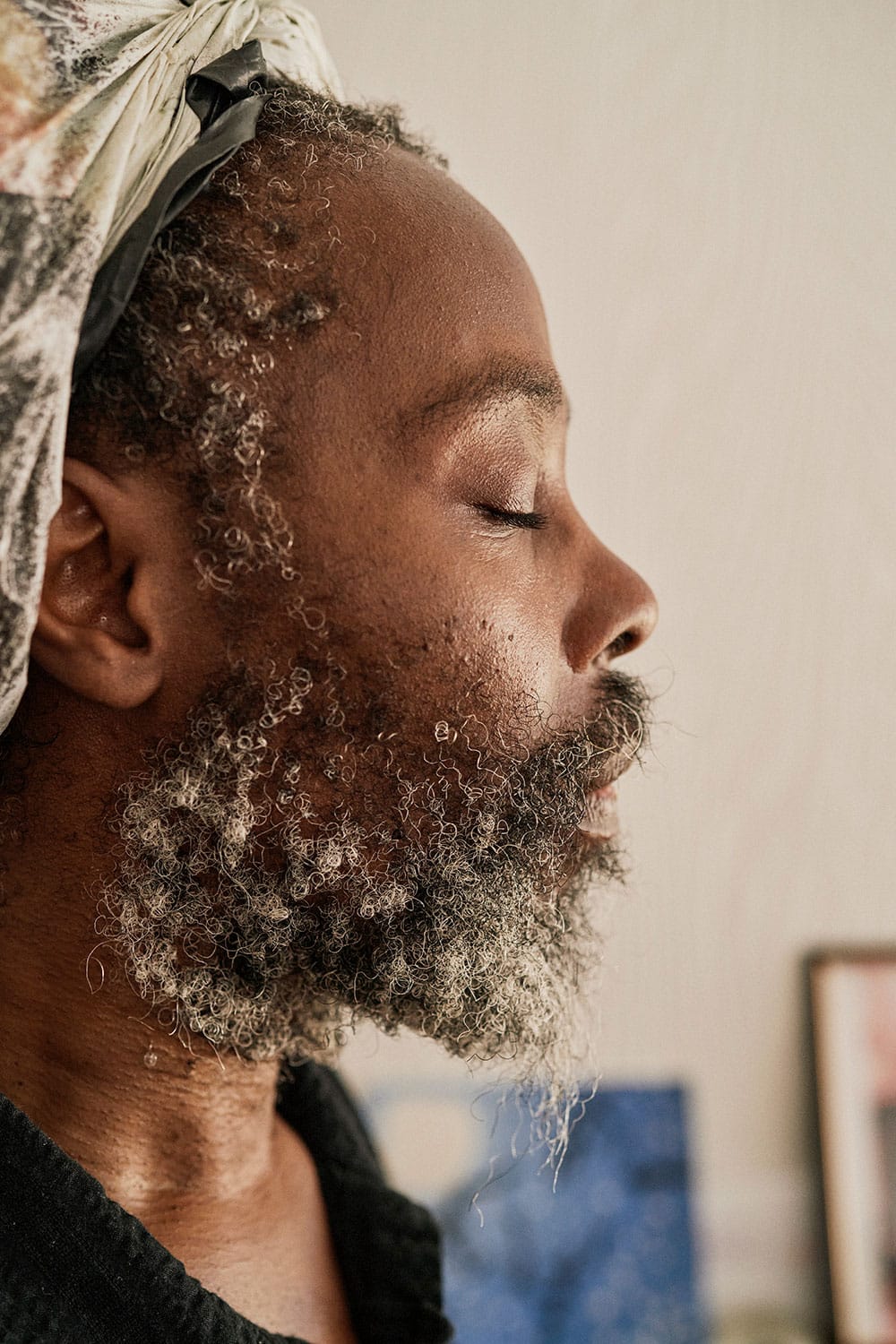
John Pearson:
Which you don’t normally take.
Johnnie Sapong:
I don’t take tablets. I’m more into natural homeopathy. I use a lot of Chinese medicine and so I would usually choose alternative. But at some point, sometimes, you’ve got to go for it.
I took a couple of Anadin, and then Karen noticed I’m not in bed and she was like, “What’s going on?” I said, “I’ve got a headache.” She was surprised, because normally I’d just get on with it. I would find another way to deal with it. But this wasn’t going away.
So, I’m lying there and I’m just trying to find a comfortable way to breathe through it. And all that’s going through my mind is that I can get through this. In the morning, the family asked me whether I was going to go [to Cainan’s culmination]. I just said, “Look, leave me in the corner. Let me just try and ride this out.”
They were gone for about an hour and a half, two hours. Literally they had gone, had the graduation, and come straight back. And as soon as Karen came back, she said, “I’m going to give the doctors a call and let them know the symptoms and see if there’s anything they can do.” The minute she spoke to them, whoever she was speaking to just said, “Take him to the emergency room immediately. Go there straight away. Drop everything. Just go there.”
So, we jumped in an Uber and we drove to Panorama City, the local Kaiser Permanente. At this point, my hair’s just hanging everywhere and I’m trying to get out the door, I can’t sort of see. And my face had started to sort of collapse on one side. On the left side everything started to go a bit lazy. But I was just feeling this, I wasn’t really aware of it.
I could feel everything on the drive. Every time the wheels turned, it was going right through my body and the driver was like, “Oh my god, I’m so sorry.” He was trying to drive consciously and safely, but I was just feeling everything. It was like I was a pebble on the concrete and I could feel every movement.
We got to the hospital finally and we get checked in. The nursing team are talking amongst themselves. and all I can hear is, “Migraine, migraine, migraine.” I wouldn’t say to you I was dying. I would say that I was sort of losing the will to listen anymore. I kept saying to Karen and Zion [my eldest son], “Can you just answer them because they’re asking me all these questions and it’s not filtering. I just need them to get this pain to go. I need it to be gone.”
One of the doctors had come in and was starting to do an assessment. They sent me for a CT scan and they said that they could increase the type of drugs they were giving me because before I was just on over the counter stuff. They started treating me intravenously — not in the hospital common areas, I had to be put into a room so they could do the narco stuff.
They then started to explain that they had found the shadow on the CT scan. At this point I’m just thinking, “Oh, f***.” Because I don’t know anything. I can’t even relate what is happening here because all I’m thinking is, “Migraine.” And, “If it’s a migraine, why am I talking about a shadow?” The next thing is, “Right. We need to get you over to [Kaiser on] Sunset Blvd, Hollywood, and you need to go and see the neurosurgeon because there’s a brain tumor.”
The word, tumor. I’m just melting. Because obviously you know as well as I do, we’ve got really good friends who’ve had brain tumors in recent years. I was just, “There, I’m dead.” I’m here. I can’t think. I can’t get my head around it.
As soon as I saw the neurosurgeon, Dr Patrik Gabikian, I thought, “This guy’s got me. This guy’s going to change my life, or give me life.” It was a weird feeling because my last experience of having this trust in doctors didn’t end very well [with my father], but I gave this a different outlook, a different take, because it was a different circumstance. And it’s also taking into account what hospitals have been through, the pressure that they’ve been under the last couple of years.
Then there was a question about the Anadin, because it contains aspirin which is a blood thinner. So, there was a whole freak out about this because I’d taken four Anadin in the last twelve hours, and basically this was going to put me back about two or three days. Bear in mind this has now gone over about six or seven hours since we’d been at Panorama City and then moved over to Sunset Blvd. So, it was probably midnight, 1am or something. Almost 24 hours from the point that I’d been alerted to this real pain.
What he explained, Dr. Gabikian, was that I had a pituitary tumor that had burst and it needed to be gone. And if it was not, then I would be dead. There were no ifs or buts or why’s or where’s, but if you leave it alone, you are starting to see what’s left of your life. That clarity, that was like a signal. He asked, “When did you first have a headache or any other symptoms?” It wasn’t because he was trying to diagnose what it was. It was because, “Tumors, they can start anywhere in your body and they can start the same size as an eye of a needle or a pinhead, travel around your body and then start growing.”

John Pearson:
So, you really didn’t have a choice. “We can either operate on this now or you’re probably not going to live.”
Johnnie Sapong:
Basically. And at this point I was morphined up, so I’m like, “Yeah, whatever you like. This is great. I’m having a great time.”
John Pearson:
But within the humor of that, was there an awareness of the severity of it?
Johnnie Sapong:
The awareness of the severity was live or die. And I’m here thinking, “I know what my choice is.” I’m looking at my wife and my son, and I can hear them. Zion’s practically turned into me, and me into my dad. And that was why I was talking to you earlier about mortality, and this whole feeling of being comfortable with that. That’s how my mum looked at me for the whole two or three months that I was in London as my dad was going. My mum was looking at me every day as if I was the younger him.
John Pearson:
You took on his role.
Johnnie Sapong:
It’s that you can see that you are morphing into each other. I was looking at my dad and I could really see this. You’re alive and you’re watching, and I’m thinking in my head, “Wow, this must be really crazy for these guys, watching me.” But at the same time, all I’m thinking is that Dr Gabikian is going to get rid of this. Once we met with him, he was just like, “Look, this is my job. This is my specialty. I’m the f***ing best at this shit. Let’s go.”
John Pearson:
And so you went immediately into surgery after that. How long was the surgery?
Johnnie Sapong:
It was about five hours. Whatever I’ve learned about breathwork, and whatever I’ve learned about meditation, all these things come into action when someone’s going in and playing around with your brain. So, the fear sort of leaves you. It brought me into this place of actually realizing that I’m here. I’ve got someone who’s amazing and I can just put my faith in him and my hand in his.
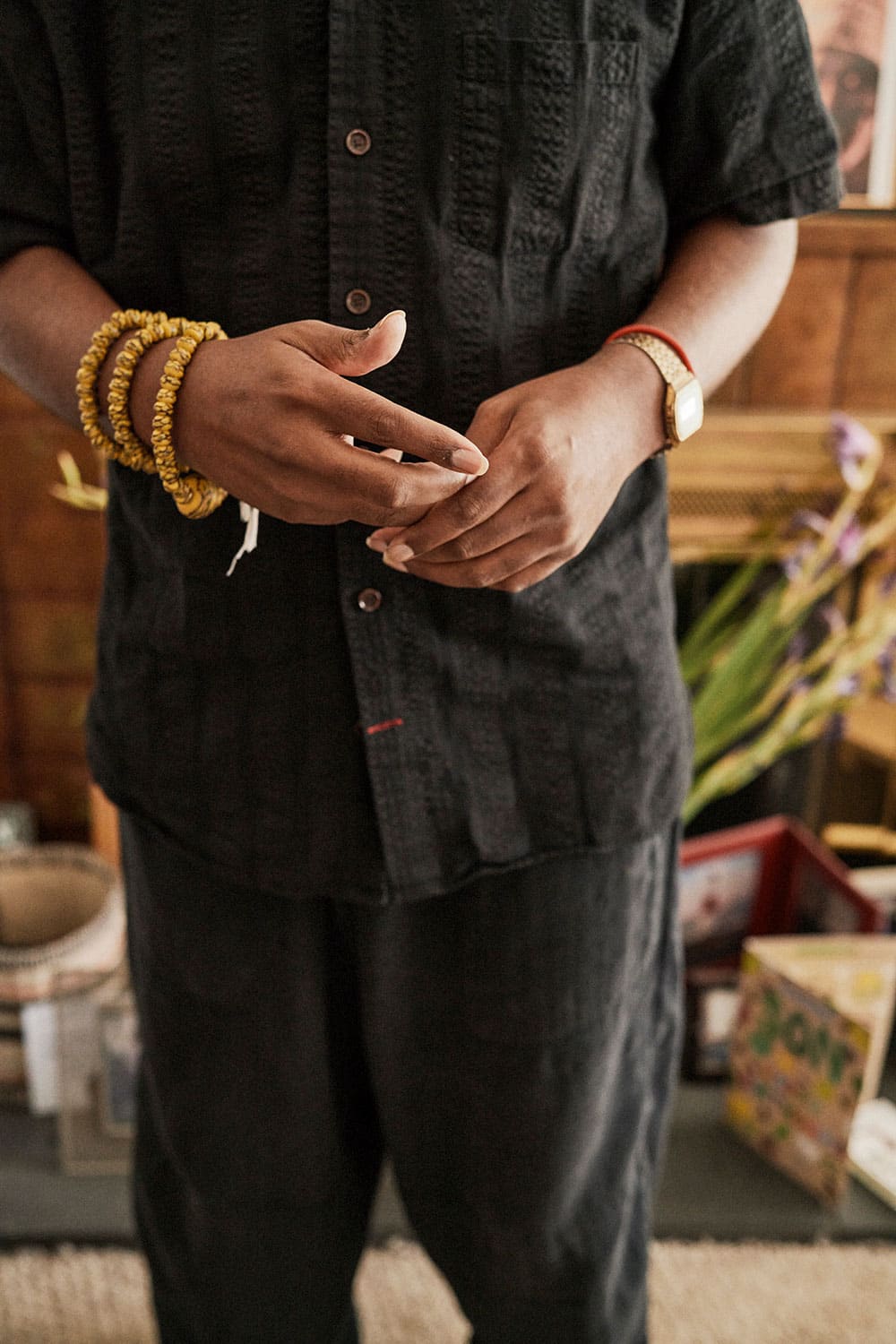
John Pearson:
Because you have dreadlocks — which you’ve grown and loved all your life, as long as we all have known you — a lot of us were thinking, “How did they manage? Did they cut his hair? Did they not?” So, can you explain how they worked around that?
Johnnie Sapong:
This was one of Karen’s big conversations, because we’ve been married for about 21 years, and been together for about 35 years. Karen said to Dr. Gabikian and his team, “You’re not going to cut his hair, are you? Because he’s not doing that.” And Zion’s there going, “No. We are doing it.” And the doc said, “No, no, no, we don’t need to do that.”
Also, when I had gotten up in the middle of the night, I was in the bathroom and was just going to cut them off myself. It wasn’t even about the hair. It was just because if I shave this head, then I can just directly go and bang it against the wall or something.
So, he actually went in through my nose for the surgery. Everything was peeled back. They bore an area to go through. I had a collapsed septum from when I used to play football, so they fixed that, then it was easier access for him to get in and I was also probably going to be able to breathe a bit better.
They removed the pituitary gland because the tumor had literally lodged into the pituitary and then started growing. So the gland was not really functioning or able to function properly.
John Pearson:
And explain to us again what the pituitary gland is relevant for.
Johnnie Sapong:
It’s hormones, the testosterone levels, estrogen levels. A balancing of your different systems.
John Pearson:
Did they say, “We can do this but you’re going to have to take medication for the rest of your life?” Is there a pill regime?
Johnnie Sapong:
Basically, when they’re explaining the pituitary gland, they were saying it’s just different in everybody, depending on whether your [hormone] levels are too high or too low. And then they’re managing whether or not you need to take one milligram or five milligrams [of hormone replacement drugs] etc, and that’s what’s going on right now.
But the body has got a certain amount of memory and it’s thinking, “Well, hang on a minute. Why are you giving me so much of this?” And all of a sudden I’ve got all these symptoms — hot flashes or constant peeing, and we’re trying to level it all out.
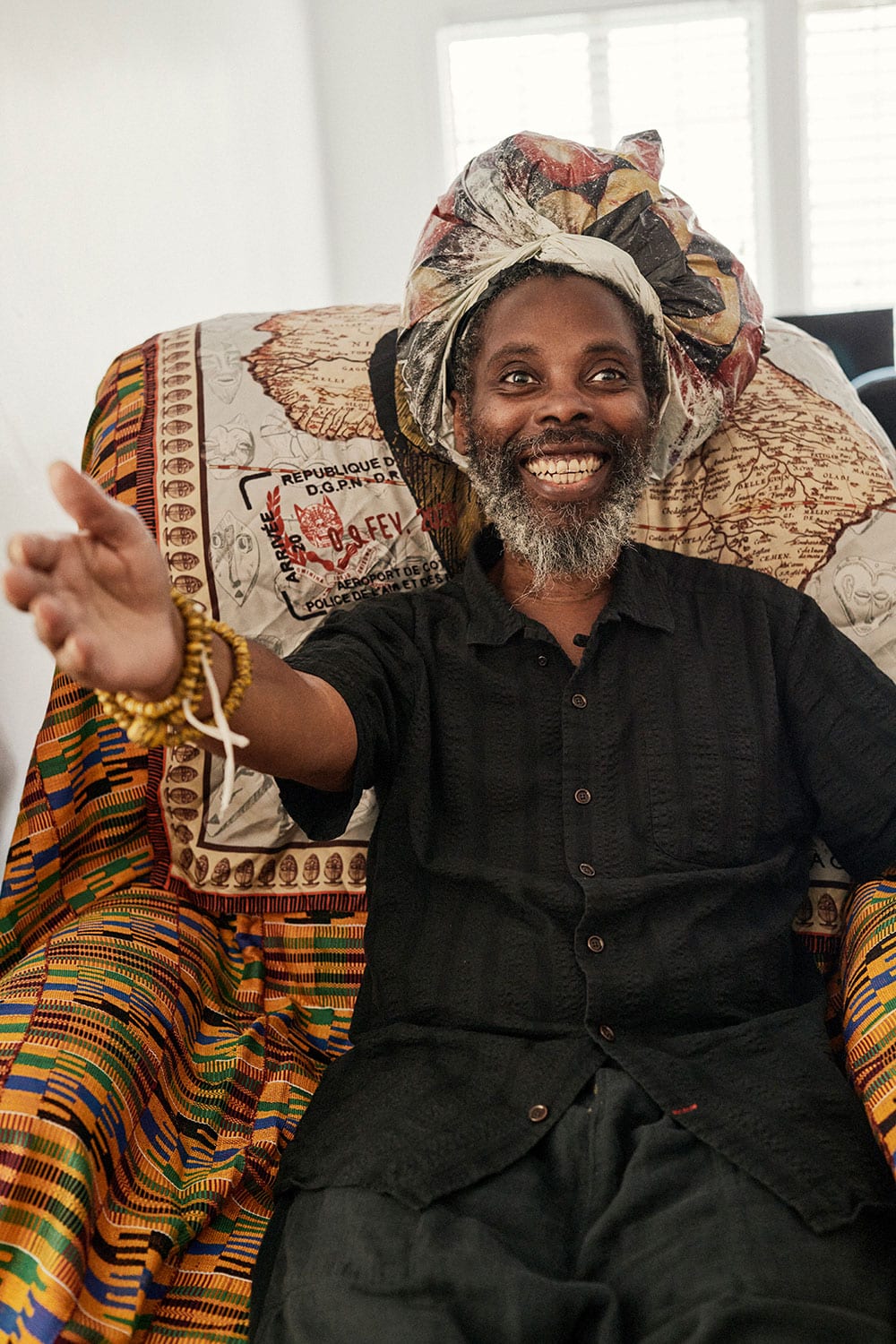
John Pearson:
So how many tablets are you on at the moment? A cacophony?
Johnnie Sapong:
Oh, mate. It’s a cacophony. That’s a good description, John. I think I’m going to use that word consistently now. Hashtag cacophony. Right now I’m on fourteen different pills. My first medication is at 6am, and the last at half past midnight.
John Pearson:
When you came round after the surgery, what did the surgeon say to you?
Johnnie Sapong:
I opened my eyes and I was still wearing an oxygen mask post-surgery. It was probably about 6am, June 10, and I was just like, “Oh shit. I’m still in hospital but I’m alive. Thank goodness.” That was it. I looked over and Zion was there. He was like, “You all right, Dad?” And I was like, “I think so.” Then, he started explaining to me what Dr Gabikian had said to him. “Dad, it’s gone really well,”. And I’m like, “Oh, brilliant. I really can’t feel any pain.” He said, “Maybe you’re still on the drugs, Dad!”
Dr Gabikian basically explained to Zion that he’d managed to remove all the mass, and we were then in a situation of rehabilitating. He was more concerned with the fact that he didn’t want me in the hospital too long. “Just because you’d end up getting sick and because I’ve gone in, exposed you and your brain. You’ve had brain surgery, so just remember that and we’re going to start getting you going.”
So as soon as it was done, everyone was in the room. They come from occupational therapy, they come from physiotherapy, from all the different departments like endocrinology. But everyone was just so caring, so loving, and I think I was probably the most well of all the patients on the ward in terms of the severity. It was the ICU, but I’d never seen anything like it.
Day four, I think it was, they started to get me to try and do little walks to the bathroom and then have a little walk around the ward. You are awake. You are alive. Then it was about getting out of hospital and getting home. And then once you’re home, it’s then about starting to get your body adjusting again.
John Pearson:
And consistently reacting to the different circumstances that your body’s going through, but also your life because you’re a busy, busy man. So, you were in hospital for how long?
Johnnie Sapong:
I was in hospital for about two weeks.
John Pearson:
Were there any other symptoms or signals prior to June 8?
Johnnie Sapong:
I just noticed my eyesight changing, roughly around the same time as my dad wasn’t very well. It was like I could feel his pain. His life growing up as a child and stuff. Sometimes you are living that and carrying someone else’s trauma passed on. And it’s not bad, it’s more like, “Okay, it makes sense now.” So you know what you’ve got to do.
All I was talking about was how I could give back to all these people that had helped me, these people in the hospital.
John Pearson:
For someone who hasn’t really taken pills in their life, someone who’s chosen to do the homeopathic route, which has been around a lot longer than Western medicine, you must have had a newfound respect for the actual Western doctors that looked after you.
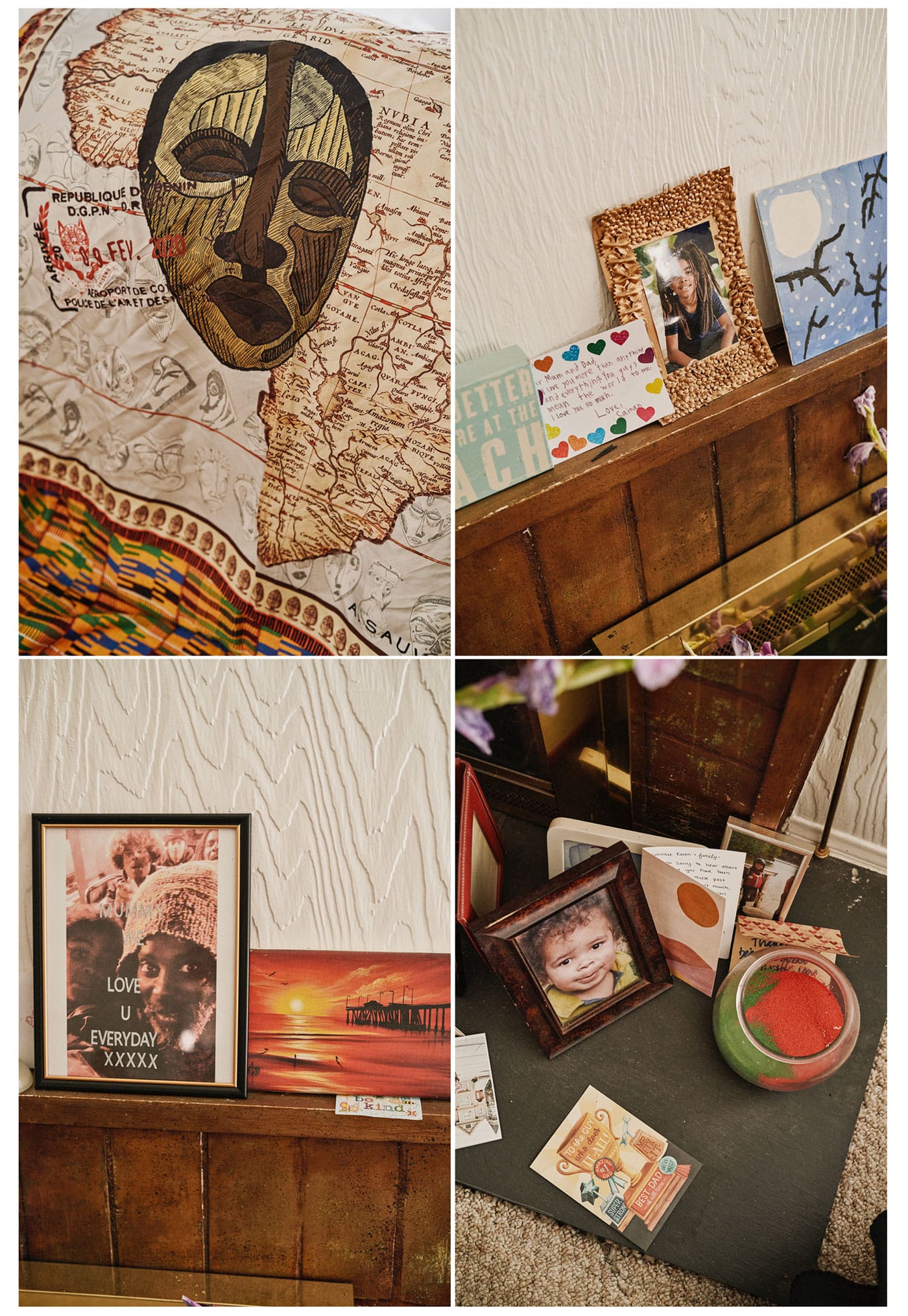
Johnnie Sapong:
The thing that’s really funny, and probably why I’m still not smoking, was that the amount of respect that I had for medicine, for science, was probably wavering after the last few years that we’ve had. And definitely, from what I was watching with my father. But I think this was a recalibration at the brink, for the appreciation and the awareness, because I had a near death experience.
And from that, I was like, “Wow.” The nurses on the ward, on the ICU ward, were f***ing incredible. It was like they were just babying you every step of the way. I guess that’s what it’s like when, placed in an emergency, these guys are just focused on what they do and they’re saving lives. We’ve spent countless days or weeks watching [medical drama] shows on TV. But this was the real deal.
John Pearson:
I get it. I come from a family of nurses, so I know that they choose a life of service and they are extraordinary heroes.
Johnnie Sapong:
They certainly have. They are extraordinary.
John Pearson:
So you’re coming out of this now, and you’re three or so months in. Philosophically, how has it changed you, do you think? What have you learned? What’s clear to you? What are your priorities?
Johnnie Sapong:
What have I learned? I’ve learned that the beauty and the miracle of life is for living, being grateful, giving thanks; in terms of having a beautiful, loving, caring wife, and having these wonderful boys who I see are also about caring and sharing. And then seeing the same thing with my brothers and my mother. The way that this has affected everybody.
It’s the one year anniversary of my dad [passing] right now, and that’s a whole big thing in Ghana. He was a part of the Windrush generation, who moved to London to further his education, but at that same time he was still thinking about setting up a farming business back in Ghana for the rest of the family. This was the guy that said to me, “You don’t want to be a hairdresser. You want to be a doctor or a lawyer or work in finance. Because you’re going to be able to carry this life on for your family.” Obviously there’s another side to life that’s about functionality, and some people are good at that and some people are not. But he said to me, “If you’re going to do hairdressing, then I’d better get you the stuff.” So, I started at college, had my apprenticeship and the old man bought me all the gear. He said, “If you’re going to do this, then you’d better go and give it your best shot.”
I’m in an industry where it’s really based on the fact that we’re looking at each other all the time. It’s a visual. It’s about beautiful people. But behind all of that, we’re still present. And that’s where I resonate.
Where do you go next? They’re the questions that come, because as the doctors are talking to you, they’re like, “You’ve got to take time to get yourself back. It’s not going to just happen overnight.” And I’m not thinking about it happening overnight. I’m just thinking that I’ve got so much to share. Why keep it all in here? Because at the end of the day, if I never ever do another this or that [in my career], it’s not the end of my life. But the point is that I love my work. I like to be involved.
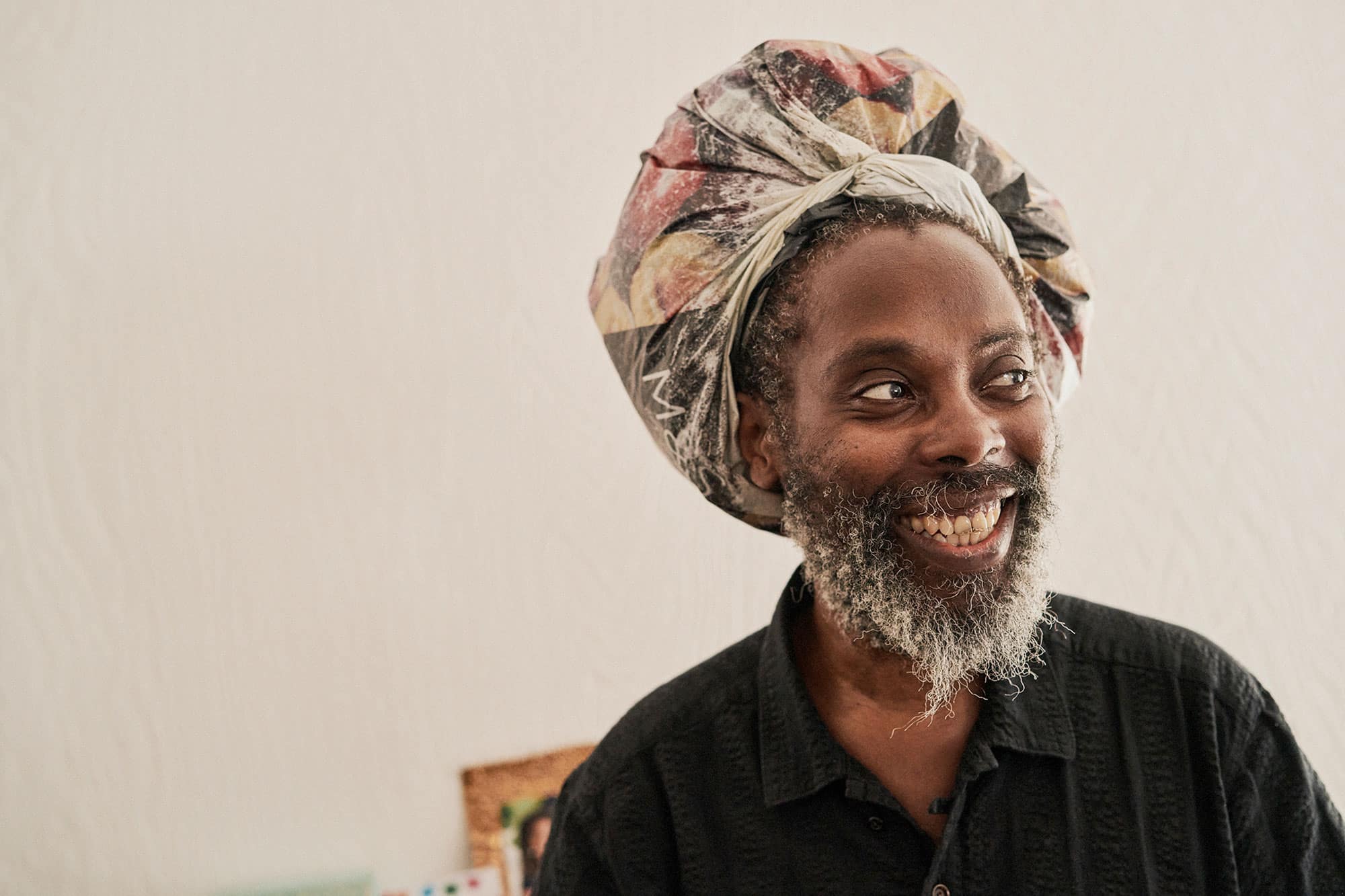
Whilst Johnnie was undergoing the surgery, his eldest son Zion set up a GoFundMe campaign, started on his TikTok account where he has 1m followers. Within days, it was shared across social media, raising ten times the initial goal, and hundreds of thousands of dollars to support Johnnie’s medical bills and recovery.
John Pearson:
You’re a very successful hairdresser. In our business, you’re one of the best there is out there. I want to just touch a little bit on the community. People rallied around you, because of who you are, because we all know and love you. And yes, we deal in an industry which is visual, we deal in an industry that’s superficial on the outside, and it’s all an illusion. But it was so extraordinarily touching how passionately the community put its arms around you. How did that make you feel?
Johnnie Sapong:
Just overwhelmed. I was absolutely overwhelmed.
We had health insurance through Covered California, which was a basic health insurance. And I think during the last few years, because of whatever was going on with federal decisions and then with Covid, there were different levels of what you were getting and what you weren’t getting. But when you get presented with something like this and you’ve got ongoing charges, and you are the breadwinner…
John Pearson:
And you can’t work.
Johnnie Sapong:
It was that thing of just feeling support. Kevin Ryan [another industry hairdresser] was one of the people that put it so succinctly when he said he looked at the post, and he was thinking about himself in that situation. That’s why he was like, “Oh, f*** this. This is one of us. And imagine if it happened to you.” It was one of those moments where you were just like, “Wow, if you can help somebody…” That’s how I’ve been raised. That takes me back to my father.
John Pearson:
It was incredible how Zion and Karen and your assistant Nora just stepped up immediately.
They tapped into something, into a moment, of you just being you and the value of how we all feel about you. Your celebrity friends, your crew, but then also as you say, people from the past who’ve met you once, people were just on board. That’s extraordinary.
And for me, I keep saying it, but the wave that went around the globe on social media is the best kind of social media. It was the most enriching use of social media that I’ve ever experienced because it speaks so much to who you are. But it also says so much about your community and to the value and the high esteem that they hold you in that they rallied round. And I think that’s the best of humanity.
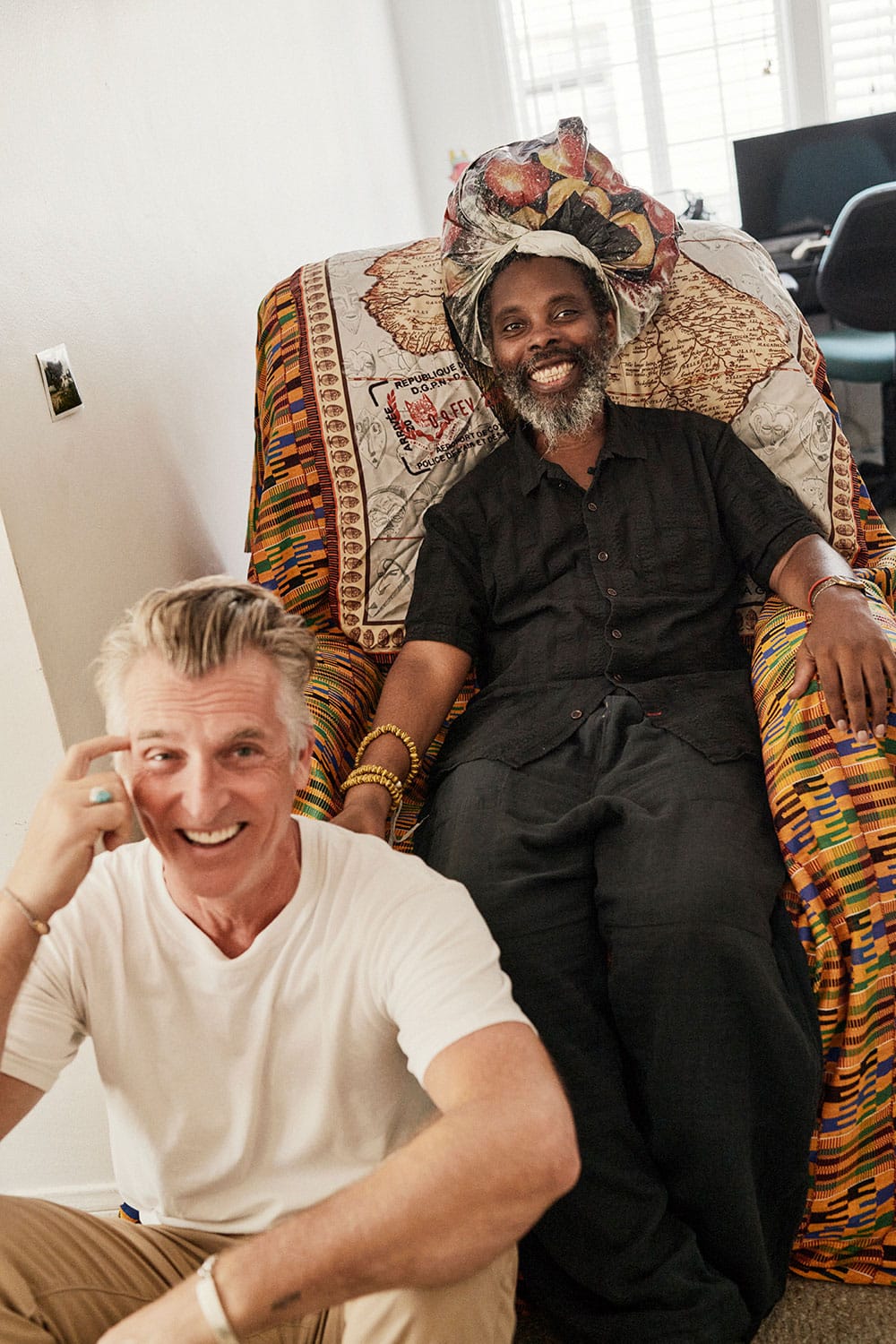
Johnnie Sapong:
The other thing with that though, John, is when I think about Zion and how we talked about social media over the last probably three or four years, that has now become his job. He’s now a creator. That’s what he does. And it makes me really proud because when he came home and said, “Mom, dad, I don’t think I’m going to go to college.” I’m like, “Cool, do what you’ve got to do.”
But the effect of this, the thoughts of friends of mine that are no longer with us, and their old assistants sending me love letters about something that you didn’t even know that your son and your wife had got together and done. It’s absolutely how you want to feel.
John Pearson:
So Zion spearheaded this. And Nora, as I said, was extraordinary. And Karen obviously, and all your friends rallied around. You must feel very blessed that you’ve got this community with you. What’s next? What timeline are you looking at as far as your recovery?
Johnnie Sapong:
I’ve got a series of appointments over the next few weeks and assessments on what’s actually happening to my body post-surgery. And then it’s about making choices and decisions. I’ve got to have one more MRI at the end of September and that gives me the okay or not. But as far as we are right now, the neurosurgeon’s really happy with what he’s done and where we’re at.
I also have regular conversations with his team. And I spoke to a weed doctor as well. I was asking him what have we got in the cannabinoids world that we can start looking at for pain relief? Because I’m still dealing with bullshit from the shoulder, which went into the neck, and all that kind of stuff. So this is all part of the plan now. The brain and the body trying to harmonize it and bring the world of Johnnie back.
John Pearson:
You seem like the old Johnnie. At first glance, you don’t seem any different.
Johnnie Sapong:
I definitely feel that the operation made me feel better. Which is what it was supposed to do.
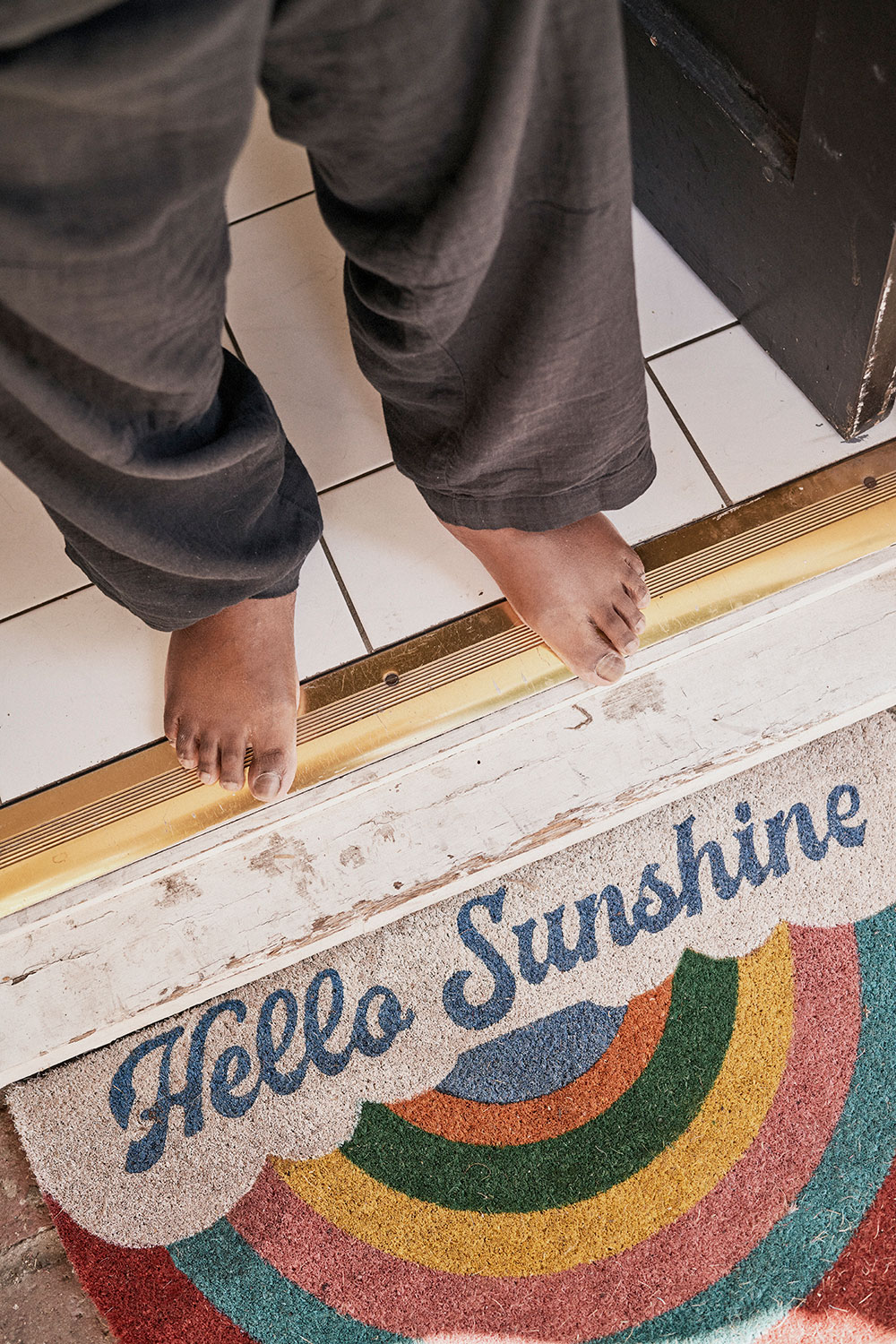
John Pearson:
Did your doctor say to you that you’re going to live out a natural life now? At any point did they say you can only expect to be around a limited time ?
Johnnie Sapong:
No.
John Pearson:
So you’re moving forward as if you are reborn, you’re starting again.
Johnnie Sapong:
I’m getting better every day and that range of motion is starting to happen. It’s really quite difficult in terms of certain areas on the body. And then there’s this frustration, because it’s like, “What the f*** does that have to do with my brain?” But then you’re like, “Ah, the big picture is the brain is run by the body. The body is run by the brain.” So here, essentially, you’ve been giving your body a rest, but you’ve also been giving your brain a rest. I’m not trying to run before I can walk. I’m giving myself the time. Probably for the first time in my life ever.
John Pearson:
And are you meditating?
Johnnie Sapong:
Daily. I’m able to get to a place of stillness, but I think what I’m finding as well is that, differently from the past, I’m not about overthinking. I like to release and then go deep, but in such a way that you can take yourself from the journey and be somewhere quite removed.
Also, I think that my dad passing away last year and this happening to me almost at the same time the following year, it’s all connected. I believe that. So this is for me to now utilize. The baton had been passed over. He’d given me his shoes. What am I going to do with it? I know now.
John Pearson:
Beautiful.
Johnnie Sapong:
Well, watch this space, as they say.

You can donate to help Johnnie on his road to recovery here


